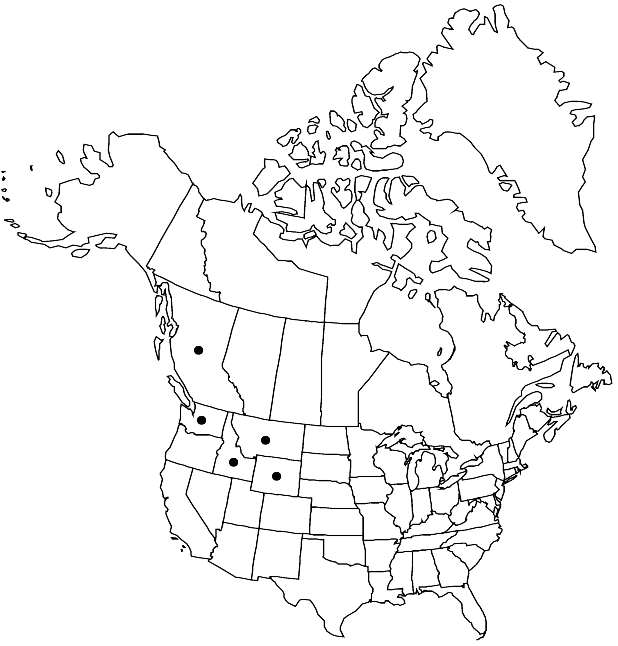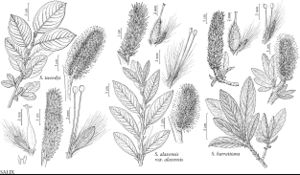Salix tweedyi
Bot. Gaz. 40: 377. 1905.
Plants 1–3 m. Stems: branches red-brown, not glaucous, villous to glabrescent; branchlets yellow-brown, (sometimes strongly glaucous), pilose or moderately densely villous, (buds caprea- or arctica-type, scale inner membranaceous layer free, separating from outer layer). Leaves: stipules (sometimes marcescent), foliaceous, 3.5–10–23 mm, 1–1.4–2.8 times as long as wide, usually lanceolate, ovate, or suborbiculate, (pleated when pressed), apex rounded, convex, or acute; petiole shallowly grooved adaxially, 3–11.3–26 mm, villous adaxially; largest medial blade elliptic to broadly elliptic, 36–65–100 × 17–35.5–85 mm, 1.1–1.9–2.9 times as long as wide, base convex, rounded, subcordate, or cordate, margins thickened, serrulate or spinulose-serrulate (sometimes teeth absent, margins with spherical glands), apex acuminate, acute, or convex, abaxial surface glaucous or not, pilose or villous, hairs curved, adaxial dull, pilose or villous to glabrescent; proximal blade margins entire (glands only) or serrulate; juvenile blade green, glabrous, pilose, or moderately densely villous abaxially, hairs white. Catkins flowering before leaves emerge; staminate stout, 39–56 × 14–22 mm, flowering branchlet 0–2 mm; pistillate densely flowered, stout, 39–70(–110 in fruit) × 13–22 mm, flowering branchlet 0–2 mm; floral bract dark brown, 1.8–4 mm, apex acute or rounded, abaxially sparsely hairy, hairs straight or wavy. Staminate flowers: adaxial nectary oblong, 0.6–1.2 mm; filaments distinct, glabrous or hairy basally; anthers yellow or purple turning yellow, 0.6–1 mm. Pistillate flowers: adaxial nectary oblong, narrowly oblong, or square, 0.5–1 mm, (unlobed), shorter to longer than stipe; stipe 0.4–1.5 mm; ovary pyriform, beak gradually tapering to styles; ovules 18–30 per ovary; styles 1.1–2.8 mm; stigmas slenderly cylindrical, 0.32–0.53–1 mm. Capsules 4–7 mm.
Phenology: Flowering Jul.
Habitat: Subalpine and alpine, streamsides and bottoms, lakeshores, marshes, spruce bogs, talus slopes, tundra, quartzite, granite, or, sometimes, limestone substrates
Elevation: 1400-4000 m
Distribution

B.C., Idaho, Mont., Wash., Wyo.
Discussion
Selected References
None.
